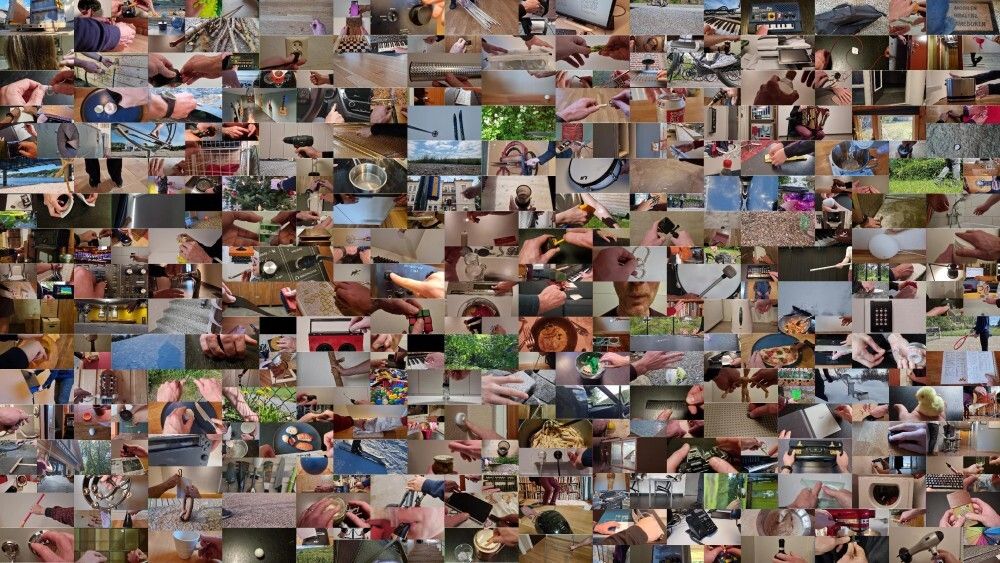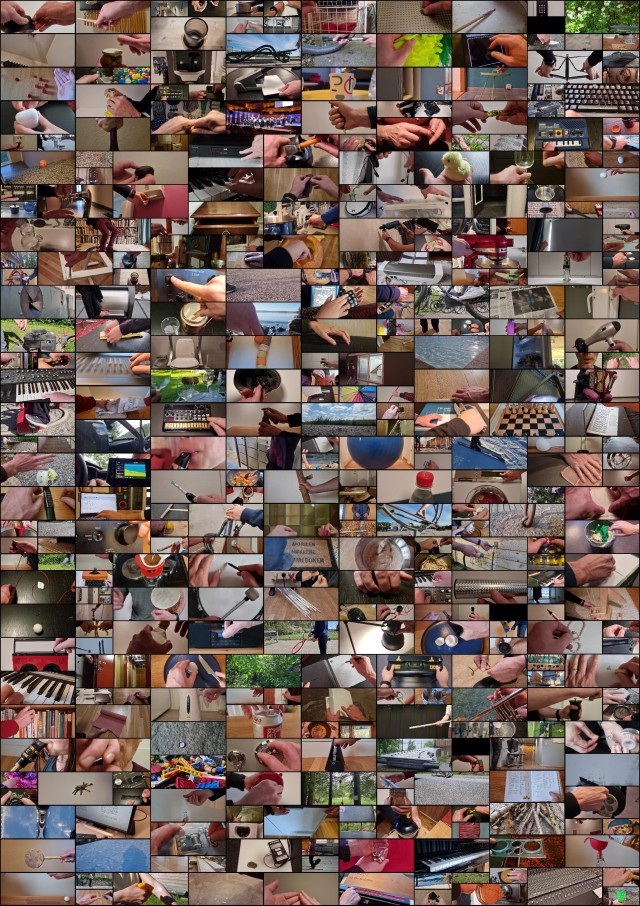1 January this year, I set out to record one sound action per day. The idea was to test out the action–sound theory from my book Sound Actions. One thing is writing about action–sound couplings and mappings, another is to see how the theory works with real-world examples. As I commented on after one month, the project has been both challenging and inspiring. Below I write about some of my experiences but first, here is the complete list:
Regularity
I have to admit that it is challenging to run a project where I have to perform a task every single day throughout the year. It was a relatively straightforward task, but it still required several steps:
Decide on the sound action to record. Sometimes this was easy; interesting sound actions literally appeared in front of me. On other days, I was sitting tired on the sofa in the evening, pondering what type of recording I could make.
Record the sound action in question. I had decided on a straightforward setup, recording with a USB microphone (Røde VideoMic Me-C) connected to my mobile phone (Samsung Galaxy Ultra S21) standing on a telescope tripod. This is not the best recording equipment I have lying around, but it is something I could bring everywhere. So throughout the year, I always had the tripod and microphone in my backpack (and as a father, I always bring a backpack!).
Edit the video to isolate the sound action to upload. The idea was that I should only trim the beginning and end of the video. This I did with an FFmpeg one-liner, preserving the original content. This meant I didn’t have to recompress the file, saving time and quality. I only made a few exceptions to this rule, removing hum from some recordings where I had been uncautious in the setup.
Upload the video to YouTube. For most of the year, I also posted a link on Twitter but after all the fuzz happening around the company, I decided to move to Mastodon.
The process was relatively simple, but I probably spent 20–30 minutes on the project each day. Sometimes, I “cheated” by recording multiple recordings in one go, but rarely more than two or three simultaneously. One exception was the “egg boiling” series (#253–257):
Of course, I made much more recordings than what ended up being posted online. Looking over the source folders, I see that I had to make many takes of some recordings. I recorded in everyday environments, which means there are always some disturbances. Other times, I was unable to capture the essence of the sound action. Fortunately, my family was very supportive, contributed ideas, and performed actions on many recordings.
Cleaning up the database
Making all the recordings is only the first part of the project. Now the work begins with cleaning up the database. First, I will revisit the naming of all the recordings to follow an object-action-context approach. I also aim to categorize all the recordings according to Pierre Schaeffer’s taxonomy of impulsive, sustained, and iterative sounds:

That is easier said than done. Many of the sound actions contain multiple operations, such as this locking my basement storage:
I think of this as one action: the goal is to lock the basement. However, it can be broken into multiple operations:
- closing the door
- closing the hatch
- inserting the lock
- closing the lock
In addition, you can hear the sounds of the keys I hold in my hand. This seemingly simple action is quite complex when one breaks it down into multiple operations, and the question is how humans and computers can systematically analyze this.
In addition to the scientific work on the collection, I plan to use the sound actions in performance. I already have some plans about how both the sound and visuals can be used creatively. It will be exciting to develop this more in the year to come.
Towards environmental sounds
The 365 sound actions project has led me to focus on the beauty of everyday sounds and their sound-producing actions. It is easy to forget about the capacity of our auditory system and what it can reveal about the world we live in. In my new project AMBIENT, I will explore the audiovisual rhythms of everyday environments. Some of the sound actions I have recorded this year have had a rhythmic character, and others have been singular. I look forward to exploring such rhythms more in the years to come.
With that, happy new year!


